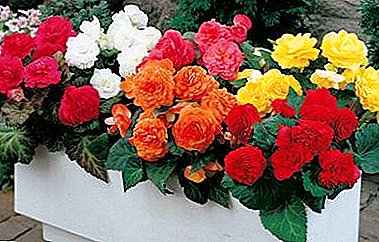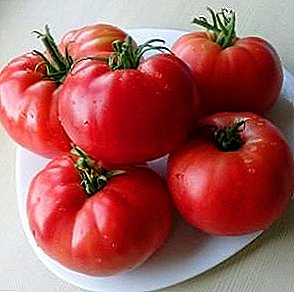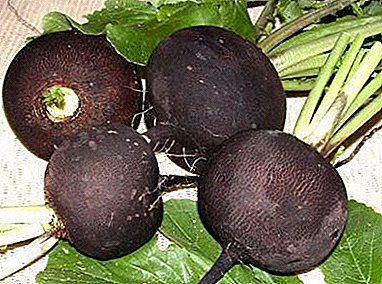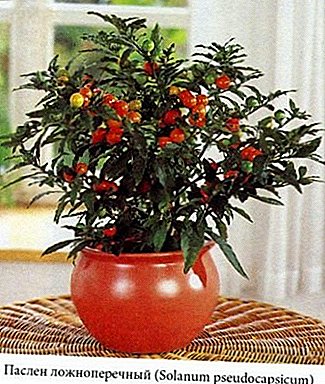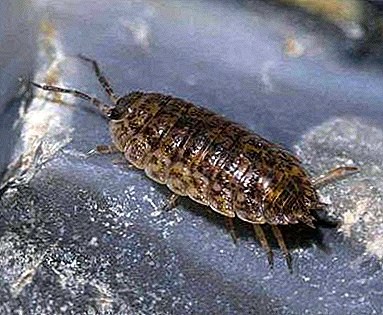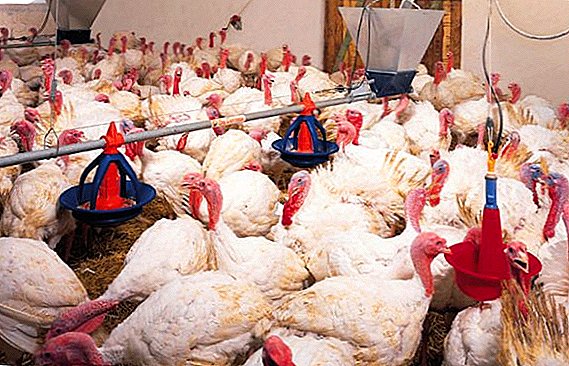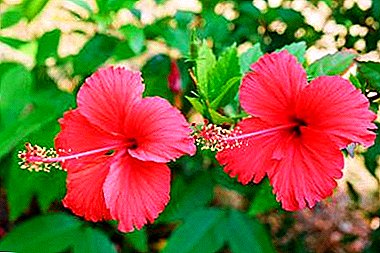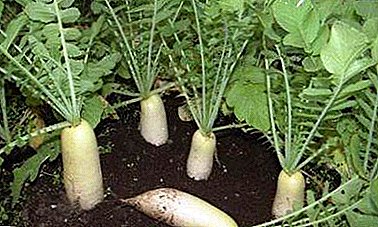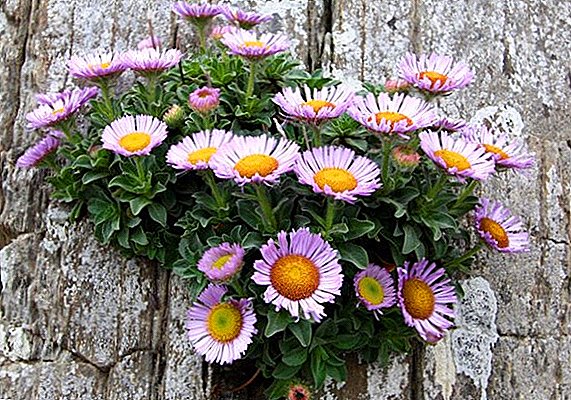 The choice of flowers for flower beds in the garden plot is always a very crucial moment. In addition to the fact that the plants must come to taste, I want them to be unpretentious and adorn the flower garden as long as possible, until frost. There are enough perennials and annuals that meet these criteria. We propose to consider a flower such as erigeron, which does not take a lot of trouble when planting and caring for him.
The choice of flowers for flower beds in the garden plot is always a very crucial moment. In addition to the fact that the plants must come to taste, I want them to be unpretentious and adorn the flower garden as long as possible, until frost. There are enough perennials and annuals that meet these criteria. We propose to consider a flower such as erigeron, which does not take a lot of trouble when planting and caring for him.
Description
Translated from the Greek, "Erigeron" means "early elder," and this is due to the fact that his seeds ripen very quickly. The flower is also called the small-glider, because of its thin tongue or needle-like petals. The perennial belongs to the Astrov family, and its genus has more than 200 different types and varieties, while not many of them are grown in culture.
If you do not have time to carefully care for the plants, we offer a list of unpretentious perennials: astilbe, dicentre, iris, lupine, rudbeckia, host, echinacea.

The plant resembles small lush bushes of bright green color, 20-65 cm high. With the onset of stable heat, the small-scale gazeter is covered with small flowers of 5-7 cm in diameter, which somewhat resemble asters. The color of the buds depends on the variety and type.
Did you know? The foliage of this herb contains many vitamins and microelements. The small-scale beauty is rich in vitamin C, flavonoids, mineral salts, tannins, resins, and tannin. There is also a high content of essential oil, which is widely used to combat various inflammations.
Types and varieties
With a huge variety of varieties, not all varieties and small-scale apels are grown in flowerbeds. Let's look at the most popular ones:
- Karvinsky - this popular small-scale painter is suitable for planting in open areas, as well as for ampel growing. The height of the shrub does not exceed 15 cm, and in width under favorable conditions it can grow up to 65 cm. The variety is distinguished by unusual and very attractive flowers, which during the growing season alternately change their color from pink to white and then to crimson. At the same time, perennial flowers can decorate the buds with different colors, which adds to it mysteriousness and incredible decoration.
- "Pink Diamond"- herbaceous perennial, which reaches 55-65 cm in height. The flowers are collected in basket inflorescences, in the central part of which are small yellow buds, and on the edge - pink. Flowering continues for a month.
- " Agra's Treasures"- the variety is distinguished by an abundance of species and colors of small flowers. Mini-bushes grow to 65 cm in height. Using these erigurons, you can create various ornaments by building multicolored mosaics.
- "Pink treasure"- is a tall bushes (up to 70 cm), which are elegantly decorated with pink and lilac buds with bright yellow core. Blossom twice during the growing season at the beginning and end of summer.
- "Orange"- refers to the rare species of the small-backlord. This perennial is simply created to attract admiring glances to itself. Powerful shrub stalks are crowned with needle-like bright orange buds that bloom throughout the month in late June - early July. The plant height is 40-50 cm.





Planting and care
Erigeron, like any other plant, needs proper planting and proper care in the open field. When choosing a landing site, the best give preference to solar areas, while the shrub will feel pretty good in the shade. The soil must be prepared for planting, it must be fertile and well drained. Watering perennial is when the earth around it has dried up a bit.
Important! Moisture stagnation can lead to disease or death of the plant, so care should be taken with water procedures.
Be sure to conduct regular dressings in spring and autumn. Organic matter is best for Erygeron, it can be compost, manure or humus. At the end of flowering, it is recommended to remove the flowering buds and, if necessary, to tie up bushes, these measures will help to maintain the decorativeness of the plant before the onset of cold weather.
Perennial refers to winter-hardy plantsbut if the climate in your region is very harsh, you should take care of the shelter for the winter, this optional procedure will give you confidence that your flowers will safely endure the winter and will continue to delight you with their beauty next season. The plant does not need constant transplantation and can grow in the same place for more than 5 years.

Breeding
Perennial reproduction is possible in several ways, and all of them are quite successful. The only thing to consider is the type and variety, and based on this, choose a more acceptable option.
In landscape design, the small-nobleman blends well with daisies, geraniums, geyher, liatris, veronica, daisies.
With the help of seeds
Sow planting material best in vases. Due to the fact that not very active germination is typical for the small-scale bloom, this method is much more convenient for planting in open ground. At the beginning of spring, it is necessary to fill the pots with a light substrate and pour the seeds in there without deepening them in the soil, then pour them abundantly.
Containers with future colors should be placed in a well-lit, warm place. Dive seedlings can be when they have already appeared more than 3 leaves. In early summer, the seedlings are planted at a distance of 30 cm from each other. Planting in open ground is allowed; for this purpose, the soil is loosened, the planting grooves are separated and seeds are placed in them. After that, seedlings watered with warm water. 
Important! With seed reproduction, perennial flowering is guaranteed already in the first season, exceptions are only some species that blossom only in the second year after planting.
Dividing bush
Thus, plants are propagated in spring or early autumn. For this suitable shrubs that have reached 3 years of age. The small-scale painter is carefully dug out with the help of a fork and divided into several parts. After that, you should immediately begin landing. The interval between plants should be not less than 30 cm. A distinctive feature of the bushes is that they very quickly gain strength and grow.
Cuttings
In early spring you can separate the young shoots and propagate errigon with their help. Each cutting must have part of the root.. Cuttings should be placed in loose soil and provide film cover for better rooting. After new greens appear on the sprouts, the shelter is removed and, if necessary, transplanted to a permanent habitat.
Diseases and pests
For this plant diseases and pests are not terrible. As a preventive measure, ash is introduced into the soil around the bush. The most important thing: to monitor watering, since it is excessive moisture that can cause fungal diseases.
Use in landscape design
Due to its simplicity and decoration, erigeron is very often used in the design of flower beds, terraces, balconies. With it, you can create all sorts of ornaments and various garden decorations. The shrub looks luxurious in both single and group planting. You can place it in the background and foreground, as well as make the center of the composition.

Did you know? In addition to excellent decorative qualities, the small-magnate glacier is endowed with useful properties. Drugs that include this plant are effective for bleeding of various etymologies, gastrointestinal disorders, joint pain and inflammatory processes.The small-sized giant is a completely unpretentious plant, planting and caring for it will not require much effort and knowledge, both when grown in open ground and in flowerpots. Guided by taste preferences, it is enough to determine the variety, and growing this miniature flowering shrub will not be difficult.


